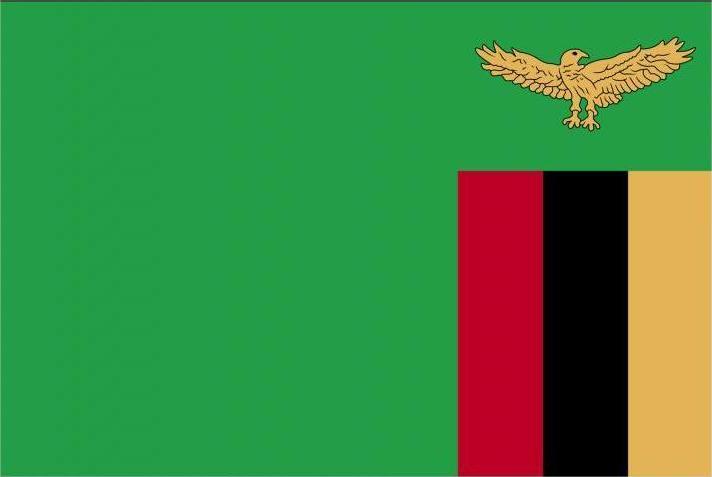IMF Executive Board Concludes the 2023 Article IV Consultation with Zambia and Completes the First Review Under the Extended Credit Facility Arrangement
The Executive Board of the International Monetary Fund (IMF) completed today the First review of the 38-month Extended Credit Facility Arrangement and the 2023 Article IV Consultation [1] with Zambia. The completion of the first ECF review allows for an immediate disbursement of SDR 139.88 million (about US$ 189 million), bringing Zambia’s total disbursements under the arrangement to about US$ 374 million.
Zambia's ECF Arrangement is for a total of SDR 978.2 million (100 percent of quota) or about US$1.3 billion at the time of program approval on August 31, 2022. It seeks to support Zambia’s homegrown economic reform plan that seeks to restore macroeconomic stability and foster higher, more resilient, and more inclusive growth.
On June 22, 2023, the Zambian authorities reached an agreement with the Official Creditor Committee (OCC) on a debt treatment that is in line with Fund program parameters. This agreement puts Zambia on the path to debt sustainability, provided the financing assurances necessary for the Executive Board review to be completed, and also clears the way for the authorities to focus on the growth-enhancing reforms that will create jobs and prosperity for Zambia.
Zambia's reform efforts since the inception of the ECF have been commendable. All quantitative performance criteria and nine of eleven structural benchmarks for the first review have been met. The target date for submission of a revised Public-Private Partnership Bill has been reset to end-July to allow stakeholder feedback to be incorporated, and the target date for implementation of the IFMIS commitment control module has been reset to end-August to allow sufficient time for validation. Decisive steps have been taken to cut inefficient public spending and create space for increased social spending and investment in human capital—including freeing the resources to provide free education for all and to hire 41,000 additional health and education workers. Public procurement regulations are being implemented to
ensure value-for-money and increased transparency of public spending. And steps are being taken to improve the business environment and attract much-needed private investment to Zambia.
The Executive Board also concluded the 2023 Article IV consultation with Zambia.
Having weathered a number of external shocks over the past couple of years, the Zambian economy is beginning to strengthen, and its post-COVID GDP-rebound is expected to continue. Despite some projected moderation in 2023, growth is expected to accelerate in 2024 and settle at around 5 percent over the medium term. Nonetheless, with poverty and inequality amongst the highest in the world and Zambia’s high exposure to climate shocks, significant challenges remain. To create a more conducive environment for private sector development and attract much needed private investment, strengthening economic governance and addressing corruption vulnerabilities should remain a central aspect of the government’s reforms, including implementing the recommendations of the IMF’s Diagnostic Report on Governance and Corruption , published in December 2022. Sustained efforts are also essential to maintain fiscal credibility while also creating sufficient space for social, development, and climate spending.
Following the Executive Board discussion on Zambia, Ms. Kristalina Georgieva, Managing Director, issued the following statement:
“The authorities have made commendable efforts over the past two years to stabilize the economy, despite the continuation of significant external shocks. Going forward, it will be important to sustain their commitment to the strong policies needed to safeguard macroeconomic stability, restore debt sustainability, and promote durable and inclusive growth.
“Performance under the ECF-supported program has been robust, including a significant fiscal adjustment in 2022 and measures to restore ZESCO’s financial viability. Going forward, further fiscal adjustment focused on revenue mobilization and supported by continued fiscal reforms, including in PFM, revenue administration, and debt management, will be essential. The increased level of social spending should be sustained to protect the most vulnerable, and further efforts are needed to mitigate fiscal risks, including strengthening the framework for Public-Private Partnerships.
“Zambia's agreement with the Official Creditor Committee (OCC) under the G20 Common Framework on a debt treatment consistent with program parameters is very welcome. Swift finalization and signature of the Memorandum of Understanding with the OCC will be important. Timely implementation of this agreement, together with agreements with private creditors on comparable terms, should restore Zambia’s debt sustainability over the medium term.
“The Bank of Zambia should remain alert to inflationary pressures and continue reforms to preserve financial stability and enhance inclusion, even as the financial sector landscape evolves.
“Strengthening economic governance and addressing corruption vulnerabilities should remain a central aspect of reform, and the authorities’ commitment to implementing the recommendations of the IMF's Diagnostic Report on Governance and Corruption, including to enhance transparency and robust implementation of public procurement regulations, is commendable. These reforms, combined with the authorities' climate-smart growth policy, will provide a more conducive environment for private sector investment and growth.”
[1] Under Article IV of the IMF's Articles of Agreement, the IMF holds bilateral discussions with members, usually every year. A staff team visits the country, collects economic and financial information, and discusses with officials the country's economic developments and policies. On return to headquarters, the staff prepares a report, which forms the basis for discussion by the Executive Board.
Table 1. Zambia: Selected Economic Indicators, 2019–26 | ||||||||
2019 | 2020 | 2021 | 2022 | 2023 | 2024 | 2025 | 2026 | |
Projections | ||||||||
National accounts and prices | ||||||||
GDP growth at constant prices | 1.4 | -2.8 | 4.6 | 4.7 | 3.6 | 4.3 | 4.5 | 4.7 |
Agriculture | 7.7 | 17.2 | 6.9 | -2.2 | -0.2 | 3.8 | 4.1 | 4.2 |
Mining | -5.1 | 8.0 | -6.3 | -4.4 | 4.9 | 9.0 | 8.7 | 7.4 |
Non-mining, non-agricultural | 1.8 | -5.6 | 5.9 | 6.5 | 3.7 | 3.8 | 4.0 | 4.4 |
GDP deflator | 7.6 | 13.7 | 27.6 | 8.6 | 12.1 | 9.9 | 7.3 | 6.9 |
GDP at market prices (millions of kwacha) | 300,449 | 332,223 | 443,362 | 504,477 | 585,449 | 671,332 | 752,580 | 841,746 |
Consumer prices | ||||||||
Consumer prices (average) | 9.2 | 15.7 | 22.0 | 11.0 | 10.6 | 9.6 | 7.5 | 7.0 |
Consumer prices (end of period) | 11.7 | 19.2 | 16.4 | 9.9 | 11.4 | 7.9 | 7.0 | 7.0 |
External sector | ||||||||
Terms of trade (deterioration -) | -6.4 | 13.9 | 22.1 | -6.8 | 5.8 | -0.2 | -0.5 | -0.7 |
Average exchange rate (kwacha per U.S. dollar) | 12.9 | 18.3 | 20.0 | 17.0 | … | … | … | … |
(percentage change; depreciation +) | 23.3 | 42.3 | 9.1 | -15.3 | … | … | … | … |
End-of-period exchange rate (kwacha per U.S. dollar) | 14.1 | 21.2 | 16.7 | 18.1 | … | … | … | … |
Current account balance | 0.4 | 10.6 | 9.7 | 3.6 | 4.7 | 7.3 | 8.6 | 8.6 |
Gross international reserves (months of prospective imports) | 3.0 | 1.9 | 3.4 | 3.5 | 3.5 | 4.2 | 5.0 | 5.0 |
Money and credit | ||||||||
Reserve money (end of period) | 25.8 | 57.0 | 8.5 | 12.0 | 17.2 | 12.5 | 11.0 | 11.8 |
Broad money (M3) | 12.5 | 46.4 | 3.7 | 24.5 | 17.2 | 12.5 | 11.0 | 11.8 |
Credit to the private sector (percent of GDP) | 12.5 | 12.3 | 8.5 | 10.0 | 15.2 | 16.7 | 18.1 | 21.1 |
National accounts | ||||||||
Gross investment | 39.3 | 32.3 | 28.5 | 31.9 | 31.6 | 31.8 | 31.8 | 32.3 |
Government | 9.4 | 7.8 | 3.9 | 3.3 | 3.1 | 3.2 | 3.2 | 3.7 |
Private | 29.8 | 24.5 | 24.5 | 28.5 | 28.5 | 28.5 | 28.5 | 28.5 |
National savings | 39.7 | 42.9 | 38.1 | 35.5 | 36.4 | 39.1 | 40.3 | 40.9 |
Central government budget | ||||||||
Revenue | 20. | 20.3 | 22.3 | 20.0 | 21.2 | 22.0 | 22.1 | 21.8 |
Taxes | 16.1 | 15.7 | 16.0 | 15.8 | 17.5 | 17.8 | 17.9 | 17.9 |
Grants | 0.3 | 0.5 | 0.6 | 0.4 | 0.4 | 0.7 | 0.6 | 0.4 |
Other revenue | 4.0 | 4.1 | 5.7 | 3.8 | 3.4 | 3.5 | 3.5 | 3.5 |
Expenditure | 29.8 | 34.1 | 30.4 | 27.6 | 26.2 | 26.3 | 25.4 | 26.0 |
Expense | 20.4 | 26.3 | 26.5 | 24.3 | 23.1 | 23.1 | 22.2 | 22.1 |
Net acquisition of nonfinancial assets | 9.4 | 7.8 | 3.9 | 3.3 | 3.1 | 3.2 | 3.2 | 4.0 |
Net lending/borrowing (cash basis) | -9.4 | -13.8 | -8.1 | -7.7 | -5.0 | -4.4 | -3.3 | -4.3 |
Net lending/borrowing (commitment basis) | -13.9 | -17.4 | -13.9 | -5.3 | -3.2 | -2.7 | -1.8 | -3.0 |
Primary balance (commitment basis) 1 | -6.9 | -10.1 | -5.8 | 0.8 | 2.0 | 2.9 | 3.3 | 2.4 |
Primary balance excluding mining revenues (commitment basis) 1 | -9.4 | -13.3 | -11.4 | -3.7 | -2.2 | -1.5 | -1.2 | -2.1 |
Public debt | ||||||||
Total public debt (gross, end-period) 2,3 | 103.3 | 150.3 | 112.1 | 110.9 | 110.2 | 100.8 | 94.1 | 88.5 |
External 4 | 62.1 | 95.8 | 57.8 | 58.8 | 69.6 | 65.9 | 62.9 | 59.2 |
Domestic | 41.2 | 54.5 | 54.4 | 52.1 | 40.6 | 34.9 | 31.3 | 29.3 |
Sources: Zambian authorities; and IMF staff estimates and projections. | ||||||||
1 Adjusted for the accumulation/clearance of VAT refund claims and expenditure arrears. | ||||||||
2 Nonresident holdings of local currency debt are included under domestic debt here, unlike in the DSA, which is conducted on a residency basis. | ||||||||
3 Including arrears. | ||||||||
4 Public and publicly guaranteed external debt. | ||||||||























































First, please LoginComment After ~